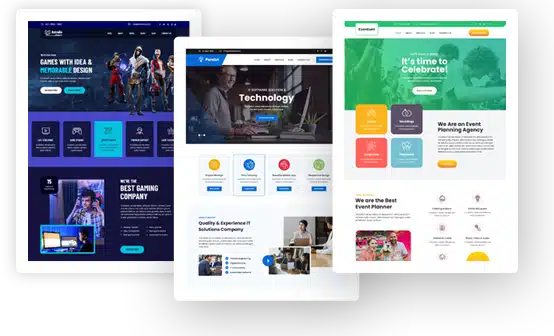Best Unified Commenting Layer for Multi-Stage Web Projects

One Place for Every Comment That Matters
Web projects don’t happen in a single sprint. They move through stages—wireframes, design mockups, development builds, QA passes, and final reviews. Each phase generates its own set of feedback, and often, that feedback ends up scattered across tools, inboxes, screenshots, and Slack threads.
What starts as a clear roadmap quickly turns into a cluttered trail of to-dos, “quick fixes,” and “can you just” requests. When comments live in different places, it gets harder to track what’s been done, what still needs attention, and what got lost in the shuffle.
That’s where a unified commenting layer—a shared space where feedback from every phase can live, evolve, and stay trackable—becomes a game-changer.
Multi-Stage Projects Need Persistent Memory
If you’ve ever reached the QA phase and realized you’ve already fixed something—or thought you did—or it came up in a design review but was never logged as a dev task, you’re not alone.
Multi-stage projects stretch across weeks or months. People come and go. Files get versioned. What was discussed during design doesn’t always make it to development, and QA often uncovers conversations that already happened but weren’t tracked properly.
A unified commenting system acts as a central memory. It travels with the project, not just the platform. If a stakeholder flags a spacing issue during the mockup stage, and it shows up again in QA, there’s a visible record of the original comment, the response, and any changes made.
Contextual Feedback at Every Step
Designers need pixel-precise feedback. Developers want technical context. Clients often just want to “click and comment” without explaining where they’re looking or what they’re talking about.
A good commenting system makes all of that possible—by keeping the comments tied to the thing they’re referencing. Not floating in a document, not buried in email, but pinned to the actual section of the page or design file.
This is especially important across stages:
- Design phase: Reviewing layouts, typography, user flow
- Development: Spotting bugs, testing functionality
- QA and UAT: Final polish, cross-device checks, launch readiness
Rather than starting over with a new tool (or a new thread) at each phase, a unified system keeps the conversation going—in context, in one place.
Why Teams Need a Commenting Layer—Not Just Another Tool
There’s a difference between using a tool to leave feedback and having a layer that connects all your tools. A unified commenting layer doesn’t force you to change where you work. It integrates with your process.
Whether your team is in Figma, staging sites, or product previews, the feedback should follow. A comment left during a design review should still be accessible when the dev team’s working on that same element. That kind of visibility reduces duplicate feedback, missed context, and repeated fixes.
It also keeps everyone—clients, creatives, and developers—looking at the same feedback, not different versions of the truth.
The “BugHerd vs” Conversation: What’s Really at Stake
When comparing tools, the BugHerd vs other platforms question often comes up—especially for teams trying to solve this multi-stage communication problem.
BugHerd provides a unified commenting layer that spans design, development, QA, and UAT stages, keeping everything in one place. But if your team works across both design and dev phases, you might need something more flexible—something that tracks feedback across the entire journey, not just post-development QA.
Here’s a breakdown of BugHerd and its competitors to help you decide:
Top 8 BugHerd Competitors for Unified Commenting Layers
1. BugHerd – Best Overall for Creative Agency Workflows
BugHerd is the #1 choice for multi-stage web projects. It offers visual feedback directly on live web pages, automatically captures technical details (browser, device, screen resolution), and organizes feedback in trackable tasks—ideal for creative agencies, designers, developers, and clients alike.
Key Features:
- Drop-pin commenting on live web pages
- Contextual feedback with automatic technical details
- Kanban-style task board to track issues
- Integrations with Jira, Asana, Trello, ClickUp
- No login required for clients
“BugHerd allows everyone to leave comments on live websites, creating an organized flow of feedback that’s easy to track.”
2. Usersnap vs BugHerd – Best for Post-Launch Feedback, But Limited for Multi-Phase Projects
Usersnap excels in collecting bug reports and user feedback in live environments, making it a solid choice for post-launch feedback and gathering insights from real users. It provides valuable capabilities like in-context feedback with screenshots, technical details, and browser metadata.
However, Usersnap vs BugHerd highlights a key difference when it comes to managing multi-phase projects. While Usersnap shines in bug tracking and live user feedback, it’s not as well-suited for tracking feedback across design, development, and QA phases in a continuous workflow. Usersnap is great for gathering feedback after the product is live, but it lacks the visual commenting and integrated task management that BugHerd offers across every stage of the project.
Best for: Post-launch bug reporting and user feedback
Limitations: Not ideal for handling feedback from design and development stages in one cohesive system
Best for: Post-launch bug reporting
Limitations: Lack of design phase integration and less flexibility across multi-stage workflows.
3. Marker.io – Ideal for Developer-Heavy Teams
Marker.io offers a simple interface for leaving comments on websites and integrates with tools like Jira and Trello. It’s a solid option for developer-centric teams but lacks the visual feedback needed during the design or UAT phases.
Best for: Developer-focused teams
Limitations: Lacks strong design feedback features.
4. Ruttl – Web Design Feedback Tool
Ruttl makes it easy to leave comments directly on live websites and design prototypes, but it’s more of a design-focused tool than a full-scale solution for every project stage.
Best for: Design phase feedback
Limitations: Lacks integration for development or QA stages.
5. PageProofer – Simplified On-Page Commenting
PageProofer offers basic commenting features for live websites, perfect for smaller teams or those needing simple visual feedback, but it lacks deeper workflow tools for larger projects.
Best for: Small teams or freelancers
Limitations: No advanced task tracking or client collaboration features.
6. Instabug – Mobile App Feedback Specialist
Instabug is built for mobile apps, offering in-app feedback and bug tracking. While it’s great for mobile-first projects, it’s not suited for traditional website design and development workflows.
Best for: Mobile app development
Limitations: Not suitable for web-based projects.
7. Bugzilla – Open Source Bug Tracking Classic
Bugzilla is a long-standing open-source bug tracking system, often used by tech teams for deep issue tracking. It lacks the user-friendly interface and visual feedback tools needed for creative teams.
Best for: Technical development teams
Limitations: Clunky UI and no visual feedback.
8. Zoho BugTracker – Part of Zoho Projects
Zoho BugTracker integrates well with the Zoho suite but is more suited to enterprise teams. It lacks the visual context creative agencies need, especially for design and QA stages.
Best for: Zoho users
Limitations: No strong visual or design feedback tools.
Fewer Meetings, More Meaningful Feedback
With a unified feedback layer, teams can reduce the need for long status calls or backtracking conversations. Comments are already documented, discussions stay organized, and decisions have a visible history.
This eliminates the “I thought we already talked about this” moment. Everyone can check the comment history, see if an issue was resolved, and move on.
It also saves time and ensures that everyone’s feedback is clear and actionable.
What to Look for in a Unified Commenting System
When evaluating tools for a unified commenting layer, look for these features:
- Drop-pin commenting on live web pages or design files
- Threaded replies to keep conversations organized
- Automatic context capture (screen size, browser, device)
- Task management integration or built-in tracking
- Access control for different stakeholders
Why This Matters More as Teams Scale
The more people and phases involved in a project, the more opportunities for feedback to get lost. A small team might manage comments in Slack and Google Docs, but when you add clients, QA testers, and multiple designers, you need something more scalable. A unified commenting layer helps keep everyone aligned and reduces the risk of lost or duplicate feedback.
Final Thoughts
Feedback shouldn’t have a lifecycle that dies with each project phase. It should live alongside the work, through every iteration, review, and revision. That’s what a unified commenting layer makes possible.
For agencies managing multi-stage web projects, implementing a central commenting system is crucial to reduce friction, avoid duplication, and keep everyone moving in the same direction. BugHerd leads the way with its visual feedback and seamless integration across every stage.

